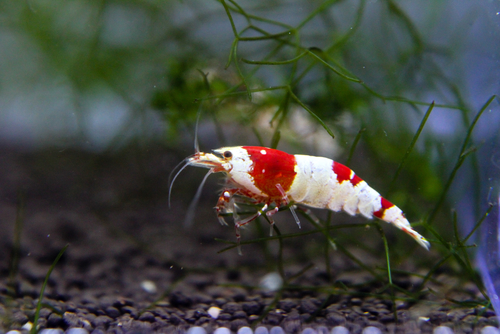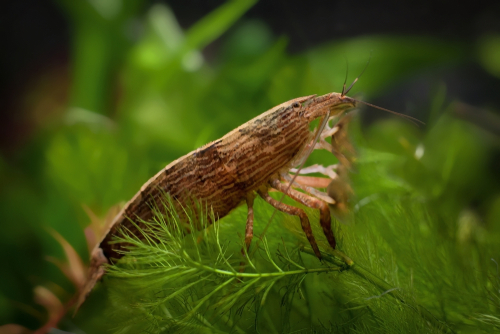Anytime you want to know how long sea creatures live, like how long does a shrimp live? How well do they handle changes in their environment? Some sea creatures can live for a very long time, while others may only last a few weeks.
One of the most intriguing species among them is the shrimp. Acquiescing yourself with these marine creatures is certainly something. Their evolutionary trend certainly is a fascinating topic that many people don’t think about often. But learning more about the different kinds of shrimp and how long they live can help us understand their ecosystem and how we interact with them.
We’ll talk about some interesting facts about shrimp and look at the factors that affect how long a shrimp lives in this blog post. Keep reading if you’re interested in learning more about the fascinating lifecycle of these hardy yet delicate critters!.
One type of shellfish is the shrimp. Shrimps are in the order decapod, which is in the subphylum crustacean. Other aquatic critters that fall under this order include lobsters, crayfish, prawns, and crabs.
The distinguishing feature of all decapods is their 10 legs, exoskeleton, and a pair of antennae. Shrimps come in many shapes and sizes, and some can even change color based on the temperature of the water or their surroundings.
In general, shrimp are scavengers that eat tiny algae, fungi, and trash. However, they can also eat small invertebrates like plankton.
Even though they are small, these animals can have surprisingly big effects on the ecosystems around them because of how they eat and how attractive they are to bigger animals. In fact, shrimp are an important part of marine food webs in many places around the world, both near and far from shore.
There are many species of these tiny crustaceans all over the world. From freshwater lakes to salty oceans, there are shrimp species that are well-suited to living in these water types.
Here are some of the more popular shrimp species; this class shall be based on natural habitat.
This species of dwarf shrimp lives in the southeast of the United States. It is also called the glass shrimp or the grass shrimp. There are several species within this group, and as the name implies, they literally look like ghosts.
Their evolutionary adaptation is a transparent look that makes them hard for predators to spot. There is a lot of irony in the fact that these fish are sometimes bred to be eaten by bigger aquarium animals while they are being kept as aquarium decorations.
Almost everyone you meet has thought about putting an Amano shrimp in their aquarium at some point. It’s probably the most popular freshwater aquarium shrimp. Native to Taiwan and Japan, this type of shrimp can grow up to a length of 2 inches.
Having amano shrimp in your fish tank is a lot of fun because they are always moving around. Also, they’re very useful because they eat algae in your aquarium, and they’re very low-maintenance, requiring much less work to keep than most shrimp species people keep in their tanks.
Shrimp are popular additions to both freshwater and saltwater aquariums. Their small size, ease of care, and bright colors make them ideal for hobbyists of all experience levels However, many aquarists wonder – how long do shrimp live?
The lifespan of a shrimp depends on several factors
Shrimp Species
There are over 2,000 species of shrimp worldwide. Some species live only a year while others can survive over 5 years.
Here are the average lifespans of popular aquarium shrimp:
- Ghost shrimp: 1 year
- Cherry shrimp: 1-2 years
- Amano shrimp: 2-3 years
- Bamboo shrimp: 1-2 years
- Vampire shrimp: Up to 5 years
- Crystal red shrimp: 1.5-2 years
- Peppermint shrimp: 1-2 years
- Harlequin shrimp: Up to 7 years
As you can see, smaller freshwater species like cherry shrimp and ghost shrimp tend to have shorter lives while larger shrimp like vampire and harlequin can live for several years.
Water Quality
Clean, stable water is crucial for a shrimp’s health and longevity. Ammonia and nitrite are highly toxic and should always be at 0 ppm. Nitrate should be kept under 20 ppm.
Poor water quality stresses shrimp, compromises their immune systems, and shortens their lifespan. Frequent water changes and filtration are key for maintaining pristine water conditions.
Each shrimp species also requires specific water parameter ranges for temperature, pH, hardness, and salinity. Keeping levels in the ideal range prevents stress and disease.
Diet
A nutritious diet enhances health and extends average lifespan. Shrimp enjoy blanched vegetables, sinking wafers, shrimp pellets, algae, and natural grazing like biofilm and aufwuchs.
A variety of foods provides a complete nutritional profile. Supplements like calcium, iodine, and trace elements can also boost diet quality.
Tank Size
Overcrowding stresses shrimp and facilitates disease transmission. A spacious tank allows shrimp to exhibit natural behaviors and prevents aggression.
While requirements vary based on species, aim for 1 shrimp per 1-2 gallons of water. Plenty of hiding spots and surface area further reduces competition.
Tank Mates
Shrimp are vulnerable to predation from fish. Avoid housing shrimp with carnivorous and aggressive species like cichlids, oscars, and arowana.
Even small, peaceful community fish may nip at shrimp. Bottom dwellers like loaches and catfish can be problematic. Do research to select appropriate tank mates.
Invertebrates like snails and peaceful fish under 1.5 inches are ideal. You can also keep shrimp species only tanks.
Age and Life Stage
Younger shrimp have a higher mortality rate as they are more vulnerable to water fluctuations and bullying. Shrimp lifespan estimates generally apply to adults who have matured and acclimated to aquarium life.
Breeding female shrimp tend to have shorter lifespans compared to males since pregnancy and brooding are physically taxing. Still, with excellent care, breeding shrimp can also reach advanced ages.
Aquarium Conditions
Your tank setup directly affects shrimp health. Here are some tips for optimizing conditions:
- Heater and thermometer: Maintain a stable appropriate temperature
- Strong filtration: Cleans water of waste and prevents toxin buildup
- Air stone: Improves oxygenation
- Plants: Absorb nitrate and provide food/shelter
- Hides: Driftwood, caves, etc reduce stress
- Substrate: Soil supports grazing; sand is smooth on delicate feet
- Aquascaping: Create clear pathways and line of sight
Acclimation and Handling
Improper acclimation can shock a shrimp’s system and lead to death shortly after being added to the tank. Follow these best practices:
- Temperature acclimate sealed bag for 15-30 minutes
- Add small amounts of tank water to the bag every 5 minutes
- Release shrimp after 1-2 hours once parameters are equalized
- Dim lights, reduce water movement and activity during acclimation
- Avoid chasing shrimp with nets which causes severe stress
Gentle handling minimizes physiological disruption. Only catching shrimp when necessary and never grabbing their fanlike swimming legs reduces injury.
Genetics
Some shrimp naturally have shorter or longer average lifespans based on their genetics. Selective breeding focuses on enhancing color and pattern traits but longevity can be affected too.
Wild caught shrimp that have adapted to their native environment over generations may live longer than selectively bred captive shrimp. Still, with diligent care, captive bred shrimp can also thrive.
Monitoring Health
Keep a close eye on shrimp and immediately address any concerns:
- Lethargy or loss of appetite
- Clamped antennae or curled body
- Missing limbs or appendages
- Discoloration or unusual spots
- Ripped or damaged fanlike legs
- Isolation from the group
Remove sick or injured shrimp to a quarantine tank for treatment. Proactively test for pathogens like parasites, fungi, and bacteria.
Emergency Preparedness
Even the most experienced aquarists deal with the occasional system crash or disease outbreak. Advance planning protects your shrimp:
- Keep spare filters, heaters, air pumps on hand
- Have extra dechlorinator, beneficial bacteria, algaecide available
- Stock up on Indian almond leaves, alder cones for tannins
- Prepare shrimp-safe medications (do research first!)
- Own a quarantine tank for sick shrimp
- Know where to buy RO or distilled water

How Long Do Saltwater Shrimp Live?

Not only are saltwater shrimp beautiful to look at because of their bright colors, but they also live for a long time, which completes the picture. Compared to most freshwater shrimp species, saltwater shrimp tend to grow bigger and live longer.
Most saltwater shrimp have a lifespan of at least two years. This class includes well-known saltwater shrimp varieties such as Scarlet skunk cleaner, Pistol, and Coral banded shrimp. Some saltwater shrimp species, however, have a one- to two-year lifespan.
Popular peppermint shrimp, for instance, have a lifespan of one to two years. However, some saltwater shrimp species have substantially longer life spans. Harlequin shrimp, for instance, can live for up to 7 years.
The lifespan of Shrimp in Nature vs. in an Aquarium
In general, there isn’t a big difference in how long shrimp kept in aquariums live compared to shrimp found in the wild. We’ve seen in this blog post that a shrimp’s longevity depends on where it lives, what kind of food it eats and how easy it is to get, the quality of the water, and whether it has predators in its tank or in the wild.
Shrimps have evolved to live in a certain environment, and they will grow and do well in that environment. On the other hand, the shrimp may not live as long if they don’t have the best place to live.
In conclusion, shrimp raised in captivity will do better and live longer than their wild counterparts if they are able to find the right conditions in an aquarium. This is because their natural habitat is sometimes disrupted or not ideal (or if they end up as food for a predator).
How Long Do Red Cherry Shrimp Live For? 3 TIPS TO HELP THEM LIVE LONGER
How long do freshwater shrimp live?
Most of the freshwater shrimp species live for one to two years. And most of the saltwater species live for two to three years. However, there are some freshwater and saltwater shrimp species that can live as long as seven years. Here’s a table showing different freshwater and saltwater shrimp species and their average lifespan.
How long do white shrimp live?
Pacific white Shrimp have an average lifespan of fewer than 2 years. Brown Shrimp is a species commonly found in the Gulf of Mexico. They have a brownish-gray color and can grow up to 8 inches long. Brown Shrimp typically live for a shorter period of time. And they have a lifespan of fewer than 2 years.
How long do shrimp live in a tank?
It is important to research and select compatible tank mates that will not harm or stress the shrimp. In summary, the lifespan of captive shrimp species can vary, with some species living for 1 to 2 years, while others can survive up to 3 to 4 years in tanks.
How long do sea shrimp last?
Sea shrimp, also known as ocean shrimp, can have varying lifespans depending on the species and environmental factors such as temperature, salinity, and food availability. According to NOAA Fisheries, the Pacific white shrimp has a lifespan of around one to two years, while the tiger shrimp has a lifespan of around two to three years.
